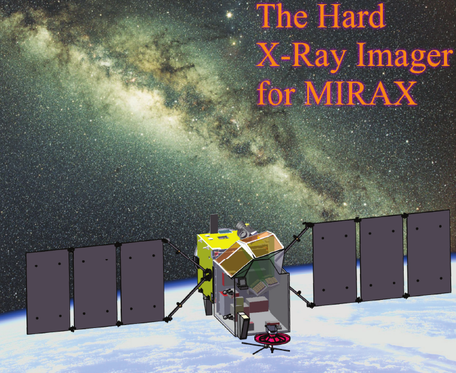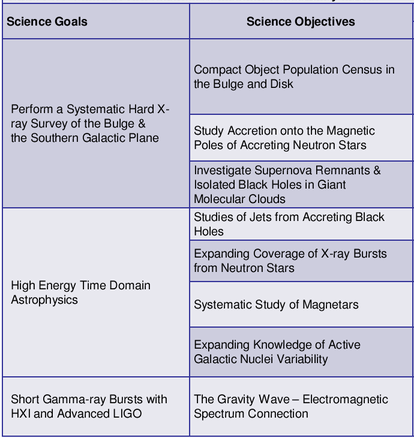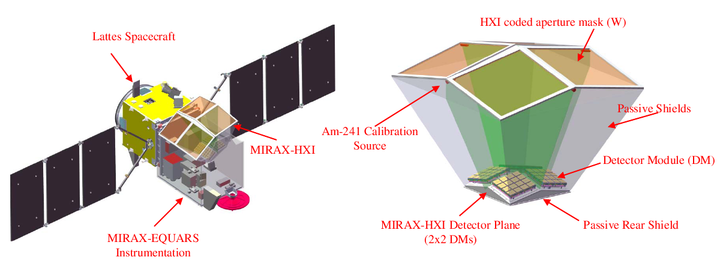The mission will pursue three primary science objectives: 1) conduct a deep, high resolution survey of the Galactic Bulge and Plane to measure the black hole vs. neutron star populations in the Galaxy; 2) study high energy time domain astrophysics of compact objects (accreting neutron stars and black holes) and the physics of their disks and jets on a wide range of scales, from faint transients and thermonuclear bursts on neutron stars, to energetic flares from relativistic jets in blazar active galactic nuclei; and 3) measure short Gamma-ray Bursts (sGRBs) with precision locations 10-30arcsec to enable searches with Advanced LIGO (2015 and beyond) for the predicted gravitational waves from their likely origin as merging neutron star or neutron star-black hole binaries. Coincident detection and ground-based redshifts of the sGRB host galaxies would enable precision measures of the Hubble constant as well as probes of relativistic gravity.
MIRAX is to be launched into a near-equatorial 650 km orbit (i = 15deg), and fixed-pointed on the spacecraft at 25deg south of the orbital zenith to scan through the Galactic Center and majority of the Galactic plane every orbit. This will allow the first high resolution survey of the Galactic Center, Bulge, southern Plane and more than half the high latitude sky every 97min. MIRAX scans continuously (1 RPO) for its simple operations in a 4y mission.
MIRAX-HXI is a 2 x 2 array of codedmask telescopes, each with fully-coded field of view (FCFoV) 25deg x 25deg. The four telescopes are mutually offset to give a combined FCFoV of 50deg x 50deg and a half-coded field of view of 63deg x 63deg. The full telescope achieves 5arcmin imaging resolution (FWHM) over this full field by using a random coded mask with 1.1mm pixel pitch at 70cm above the imaging Cd-Zn-Te (CZT) detector array with 0.6mm pixel pitch. The detector module (DM) for each telescope contains an array of 8 x 8 CZT crystals, each 19.5mm x 19.5mm x 5mm for a combined active imaging area of 243cm2 per telescope, or 973cm^2 for the full array.


